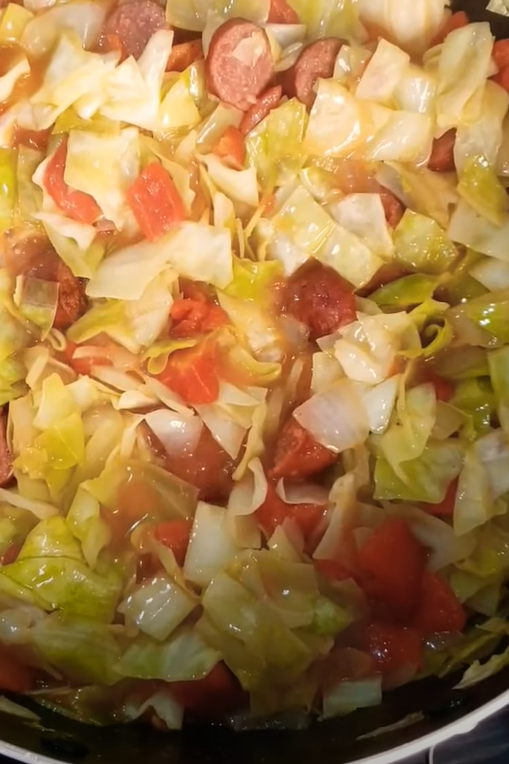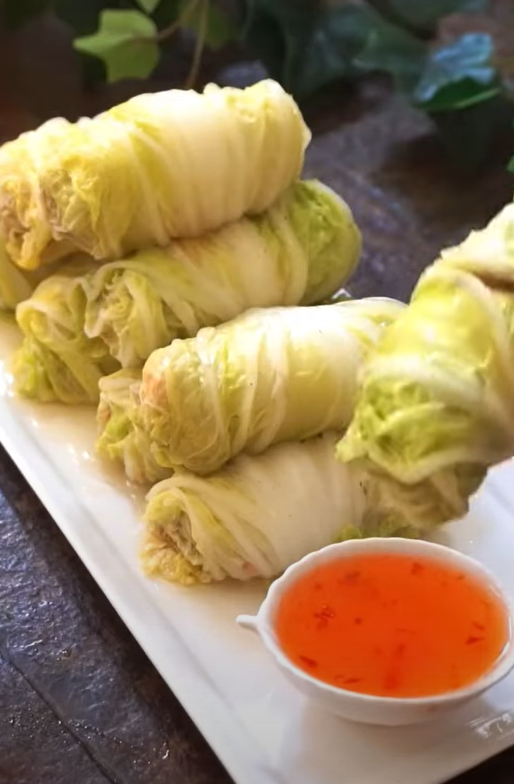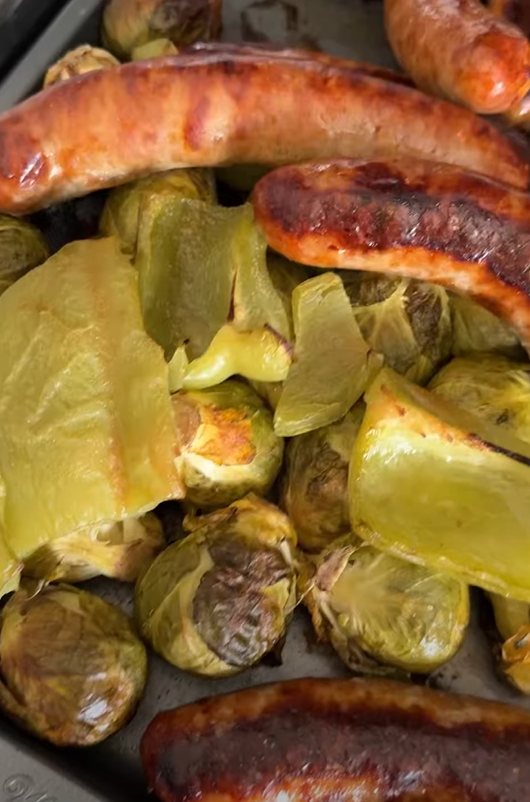When I first discovered matcha crinkle cookies at a local bakery, I knew I had to recreate them in my own kitchen. The combination of earthy matcha powder with the classic crinkle cookie texture creates something truly magical. After countless batches and plenty of green-dusted countertops, I’ve perfected a recipe that delivers those beautiful cracked tops and chewy centers that make crinkle cookies so irresistible.
These aren’t your average sugar cookies. The addition of premium matcha powder transforms a simple cookie into an elegant treat that’s perfect for afternoon tea, special occasions, or when you want to impress guests with something unique. The vibrant green color alone is enough to make people curious, but it’s the complex, slightly bitter flavor balanced with sweetness that keeps them coming back for more.
Understanding Matcha: The Heart of These Cookies
Matcha : Finely ground powder made from specially grown and processed green tea leaves, typically used in Japanese tea ceremonies and modern baking
Ceremonial Grade Matcha : The highest quality matcha with the most delicate flavor and vibrant color, best for drinking but also excellent for baking
Culinary Grade Matcha : A more affordable option specifically designed for cooking and baking, with a stronger flavor that holds up well in recipes
The quality of matcha you choose will significantly impact your cookies’ final taste and appearance. I’ve experimented with both ceremonial and culinary grades, and while ceremonial grade produces the most beautiful color, culinary grade actually works better for baking because its stronger flavor doesn’t get lost among the other ingredients.
Essential Ingredients for Perfect Matcha Crinkle Cookies
Creating the perfect matcha crinkle cookie requires more than just adding green tea powder to a basic cookie recipe. Each ingredient plays a crucial role in achieving that characteristic cracked exterior and tender interior.
The foundation starts with high-quality butter, which I always bring to room temperature for proper creaming. This process incorporates air into the dough, contributing to the cookies’ tender texture. I use a combination of granulated and brown sugar because the molasses in brown sugar adds moisture and depth of flavor that complements the matcha beautifully.
Eggs are crucial for binding and creating the proper texture. I’ve found that using one whole egg plus one egg yolk gives the best results – the extra yolk adds richness without making the cookies too cakey. The flour needs to be measured carefully; too much creates tough cookies, while too little results in spreading issues.
The real star, of course, is the matcha powder. I sift it with the dry ingredients to prevent clumps and ensure even distribution throughout the dough. The amount I use creates a pronounced matcha flavor without being overwhelming – about two tablespoons per batch strikes the perfect balance.
My Perfected Recipe and Technique
Here’s the recipe I’ve refined through countless test batches:
Ingredients Table
| Ingredient | Amount | Purpose | Notes |
|---|---|---|---|
| All-purpose flour | 2¼ cups | Structure | Don’t pack when measuring |
| Matcha powder | 2 tablespoons | Flavor and color | Sift to remove lumps |
| Baking soda | 1 teaspoon | Leavening | Creates the signature cracks |
| Salt | ½ teaspoon | Flavor enhancement | Balances sweetness |
| Unsalted butter | 1 cup | Fat and texture | Room temperature |
| Granulated sugar | ¾ cup | Sweetness | For creaming with butter |
| Brown sugar | ¾ cup | Moisture and flavor | Packed when measuring |
| Large egg | 1 whole | Binding | Room temperature |
| Egg yolk | 1 additional | Richness | Room temperature |
| Vanilla extract | 1 teaspoon | Flavor complement | Pure extract preferred |
| Powdered sugar | ½ cup | Coating | Creates crinkle effect |
The technique is just as important as the ingredients. I start by creaming the butter with both sugars until the mixture is light and fluffy – this usually takes about 4-5 minutes with an electric mixer. The eggs and vanilla go in next, mixed just until combined.
For the dry ingredients, I whisk together the flour, matcha powder, baking soda, and salt in a separate bowl. This ensures even distribution and prevents overmixing later. I add the dry mixture to the wet ingredients gradually, mixing just until the dough comes together.
The Science Behind the Crinkle Effect
The characteristic cracked appearance of crinkle cookies comes from a specific combination of ingredients and technique. The high sugar content and the addition of baking soda create a dough that spreads quickly in the oven, while the outside sets faster than the inside, causing the surface to crack and create those beautiful fissures.
Rolling the dough balls in powdered sugar before baking is crucial for achieving the dramatic crinkle effect. As the cookies bake and expand, the powdered sugar coating cracks and creates stark white lines against the green matcha dough underneath.

Temperature control is essential. I chill the shaped dough balls for at least 30 minutes before baking. This helps prevent excessive spreading and ensures the cookies maintain their shape while still developing those gorgeous cracks.
Baking Process and Timing
The baking process requires attention to detail. I preheat my oven to 350°F and line baking sheets with parchment paper. The dough gets portioned into 1½-inch balls – I use a cookie scoop for consistency. Each ball gets rolled generously in powdered sugar, making sure it’s completely coated.
Spacing is important; I place the cookies about 2 inches apart to allow for spreading. The baking time is crucial – typically 10-12 minutes, but I watch for visual cues rather than relying solely on the timer. The cookies are done when the edges are set and the centers still look slightly soft.
Baking Timeline and Temperature Guide
| Stage | Time | Temperature | Visual Cues |
|---|---|---|---|
| Preheat oven | 15 minutes | 350°F | Oven fully heated |
| Chill dough balls | 30 minutes | Refrigerator | Dough firms up |
| Baking time | 10-12 minutes | 350°F | Edges set, centers soft |
| Cooling on pan | 5 minutes | Room temp | Cookies firm up |
| Final cooling | 15 minutes | Wire rack | Completely cooled |
I’ve learned that overbaking is the enemy of good crinkle cookies. They continue cooking on the hot pan even after coming out of the oven, so I pull them when they still look slightly underdone in the center.
Troubleshooting Common Issues
Through my baking journey, I’ve encountered various challenges and developed solutions for each:
Cookies spreading too much: This usually indicates the butter was too warm or the dough wasn’t chilled long enough. I always chill my dough balls for at least 30 minutes, sometimes up to an hour if my kitchen is particularly warm.
Insufficient cracking: Not enough baking soda or insufficient powdered sugar coating can cause this. I’m generous with both – the baking soda creates the lift that causes cracking, while the powdered sugar coating helps emphasize the effect.
Bitter or overwhelming matcha flavor: Using too much matcha or poor-quality powder can create an unpleasant taste. I stick to two tablespoons of good-quality culinary-grade matcha for the best balance.
Uneven color distribution: This happens when the matcha isn’t properly sifted or mixed. I always sift my matcha with the flour and whisk thoroughly to ensure even distribution.
Storage and Serving Suggestions
Proper storage keeps these cookies at their best. I store them in an airtight container at room temperature for up to one week. For longer storage, they freeze beautifully for up to three months – I layer them between parchment paper to prevent sticking.
These cookies pair wonderfully with various beverages and occasions. I love serving them with:
- Hot green tea or matcha lattes for a cohesive flavor experience
- Vanilla or coconut ice cream for a delightful contrast
- Fresh berries and whipped cream for an elegant dessert
- Coffee or black tea for those who enjoy complementary flavors
- Sparkling water with lime for a refreshing afternoon treat
The cookies are perfect for tea parties, holiday cookie exchanges, or as a unique addition to any dessert table. Their striking appearance and sophisticated flavor make them conversation starters at gatherings.
Variations and Adaptations
Once you’ve mastered the basic recipe, there are numerous ways to customize these cookies:
White Chocolate Matcha Crinkles: I fold in ½ cup of white chocolate chips before shaping the dough. The sweetness complements the matcha beautifully.
Matcha Coconut Crinkles: Adding ¼ cup of finely shredded coconut creates a tropical twist while maintaining the crinkle texture.
Double Matcha Crinkles: For true matcha lovers, I increase the matcha powder to 3 tablespoons and add a matcha glaze after cooling.
Mini Matcha Crinkles: Using a smaller cookie scoop creates bite-sized treats perfect for parties. Reduce baking time to 8-10 minutes.
Nutritional Information and Dietary Considerations
While these cookies are undoubtedly a treat, matcha does provide some nutritional benefits. The green tea powder contains antioxidants called catechins, which have various health benefits. However, I always remind people that these are still cookies and should be enjoyed in moderation.
Nutritional Breakdown (Per Cookie)
| Nutrient | Amount | % Daily Value |
|---|---|---|
| Calories | 145 | 7% |
| Total Fat | 6g | 9% |
| Saturated Fat | 4g | 20% |
| Cholesterol | 25mg | 8% |
| Sodium | 95mg | 4% |
| Total Carbs | 23g | 8% |
| Sugars | 16g | – |
| Protein | 2g | 4% |
| Caffeine | 5mg | – |
For those with dietary restrictions, I’ve successfully adapted this recipe. Gluten-free flour works well as a 1:1 substitution, though the texture is slightly different. Vegan butter substitutes work too, though the flavor is more subtle.
The Cultural Significance of Matcha in Baking
Incorporating matcha into Western-style cookies represents a beautiful fusion of culinary traditions. While matcha has been central to Japanese tea ceremony for centuries, its integration into cookies, cakes, and other Western desserts creates something entirely new while honoring the ingredient’s heritage.
I’ve found that making matcha crinkle cookies opens conversations about food culture and tradition. Many people try matcha for the first time through these cookies, discovering they enjoy the unique flavor profile even if they were initially hesitant.
Professional Tips for Consistent Results
After making hundreds of batches, I’ve developed several professional techniques that ensure consistent results every time:
Temperature consistency: I use an oven thermometer to verify my oven’s accuracy. Even a 25-degree difference can affect the final result significantly.
Measuring precision: I weigh my ingredients when possible, especially flour and matcha powder. Volume measurements can vary significantly, but weight measurements are always consistent.
Timing attention: I set multiple timers – one for when to start checking the cookies and another for the maximum baking time. This prevents overbaking, which is particularly easy to do with green-colored dough where browning isn’t as visible.
Quality control: I taste-test my matcha powder before using it. Matcha can lose its vibrant flavor over time, and using stale powder will result in dull-tasting cookies.
Seasonal Adaptations and Holiday Versions
These cookies adapt beautifully to different seasons and holidays. During spring, I sometimes add a touch of lemon zest to complement the matcha’s earthiness. For winter holidays, I might include a hint of ginger or cardamom for warmth.
The green color makes them perfect for St. Patrick’s Day celebrations, while their sophisticated flavor profile makes them ideal for more elegant occasions like bridal showers or book club meetings.
Questions and Answers
Q: Can I use matcha tea bags instead of powder for this recipe?
No, matcha tea bags contain different types of ground tea that won’t provide the same flavor intensity or color. You need proper matcha powder, which is made from specially processed tea leaves ground into a fine powder.
Q: Why do my cookies spread too much and lose their crinkle effect?
This usually happens when the dough is too warm or the butter was overly soft when mixing. Make sure to chill your dough balls for at least 30 minutes before baking, and ensure your butter is at room temperature but not melted when creaming.
Q: How can I make the matcha flavor stronger without making the cookies bitter?
Start by increasing the matcha powder gradually – try adding an extra half tablespoon before going to a full tablespoon more. Also, ensure you’re using fresh, high-quality matcha powder, as older powder can taste bitter without providing much flavor.
Q: Can I make the dough ahead of time?
Absolutely! The dough can be made up to 3 days ahead and stored in the refrigerator, or shaped into balls and frozen for up to 3 months. If baking from frozen, add an extra 1-2 minutes to the baking time.
Q: What’s the best way to achieve the most dramatic crinkle effect?
Use plenty of powdered sugar when rolling the dough balls, chill them well before baking, and don’t overbake. The contrast between the white powdered sugar and the green dough creates the most striking visual effect.
Q: Can I substitute the eggs to make these cookies vegan?
Yes, you can use commercial egg replacers or make flax eggs (1 tablespoon ground flaxseed mixed with 3 tablespoons water per egg). The texture will be slightly different, but they’ll still have good crinkle effects.
Q: How do I know if my matcha powder is still fresh?
Fresh matcha should have a vibrant green color and a sweet, grassy aroma. If it’s yellowish or has no smell, it’s likely old and will produce lackluster cookies. Store matcha in an airtight container in the refrigerator for best preservation.
Q: Why are my cookies flat instead of puffy with cracks?
This could be due to old baking soda, overmixing the dough, or not chilling the dough balls long enough. Make sure your baking soda is fresh (replace every 6 months), mix just until combined, and always chill the shaped dough.
Making perfect matcha crinkle cookies is both an art and a science. The combination of understanding your ingredients, perfecting your technique, and paying attention to detail results in cookies that are not only delicious but visually stunning. Each batch I make reminds me why I fell in love with baking – the way simple ingredients can transform into something extraordinary through patience, practice, and passion.
These cookies have become my signature treat, the one friends and family request for special occasions. There’s something deeply satisfying about watching people’s faces light up when they bite into that perfect combination of crispy exterior and chewy center, with the sophisticated flavor of matcha dancing on their taste buds. Whether you’re new to matcha or a longtime lover of green tea flavors, these crinkle cookies offer a perfect introduction to this versatile ingredient in a familiar, comforting format.


